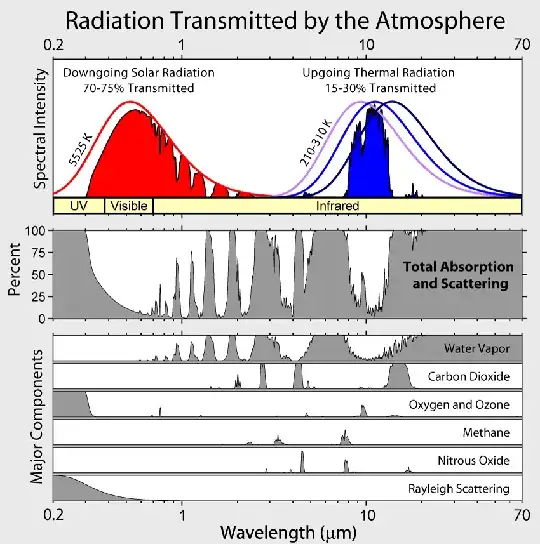Over 100 years, Methane has a Global warming potential 34 times bigger than Carbon dioxide. Over 20 years, it's even 86 times bigger. How does one arrive at these numbers?
Looking at the following graphic doesn't help either, as the area for Methane barely covers the left margin of the upgoing thermal radiation and Carbon dioxide is at the right margin. The area under the absorption curve for Carbon dioxide is definitely bigger than the one for Methane.
Source: https://commons.wikimedia.org/wiki/File:Atmospheric_Transmission.png
So what makes Methane a more effective greenhouse gas?
